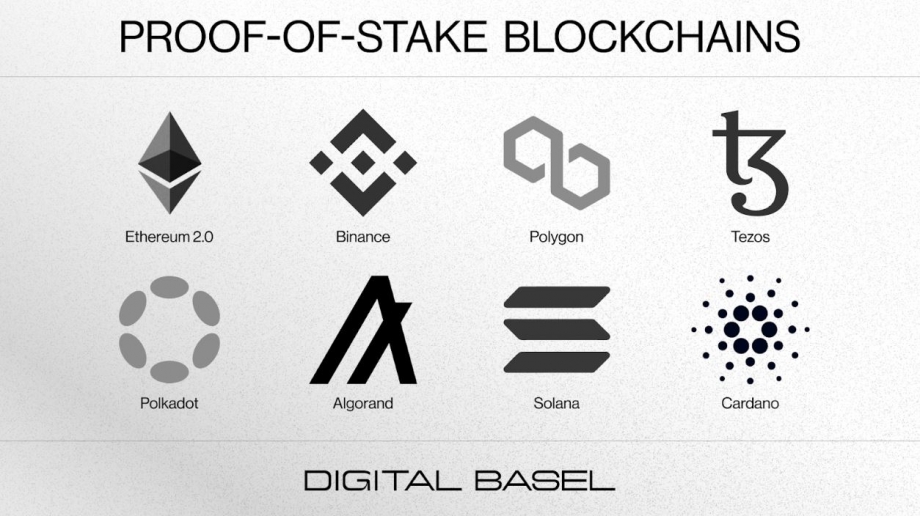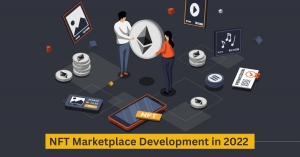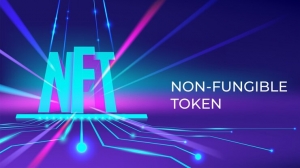The intersection of art and technology through Non-Fungible Tokens (NFTs) has brought about a significant transformation in the world of art collecting. This has spawned discussions, creative explorations, and speculation among art institutions and collectors alike. As we delve into the future of NFT art collecting, we will analyze its various aspects, implications for the art world, and the possible evolution of the industry.
In addition, we will scrutinize how NFT art collecting affects the fundamental concepts of authenticity, ownership, and provenance in the digital age. This exploratory article aims to show the potential of NFT art collecting and encourage readers to see more information on valuable sources, such as Digital Basel. Consequently, readers will be able to engage with this changing landscape more meaningfully.
What are Non-Fungible Tokens?
Non-fungible tokens, more known just as NFTs, are digital assets that serve as a means to verify ownership and authenticity of unique items, including digital and physical art. These assets are built on blockchain technology, but unlike cryptocurrencies, such as Bitcoin or Ethereum, they cannot be exchanged on a one-to-one basis. However, there is more to NFTs than just their unique nature. For example, they are also characterized by:
- Indivisibility: These assets are indivisible, which means that collectors can only acquire, trade, and possess them as complete units.
- Interoperability: Issuers can trade NFTs on various online marketplaces, accessing a broader pool of collectors and monetizing their physical assets across a global ecosystem.
- Scarcity: Issuers can determine the quantity of NFTs to be minted and sold to the collectors. Thus, they can represent rare or limited-edition assets, creating scarcity and value comparable to those held by originals.
- Safety: Securely stored on a decentralized blockchain, NFTs provide robust protection against tampering, counterfeiting, and data loss. This distributed ledger technology ensures that NFTs cannot be duplicated or altered, as each transaction is verified and recorded by a network of nodes.
- Self-sufficiency: Tokens can be integrated with smart contracts, which automatically execute the contract terms when collectors meet specific conditions. Forexample, an NFT of a painting can grant immediate access to exclusive exhibitions if its owner holds the token for long enough.
As a result, NFTs have gained significant attention and popularity in the art industry, leading to the adoption of new revenue streams by artists and art institutions. On the other hand, collectors, have found new, unique assets to diversify their portfolios, all while being enticed by three valuable features:
- Ownership: Tokens establish ownership on the blockchain by recording token ownership and the associated assets in an immutable manner. Thus, collectors can actually own a digital item that is not related to the currency, stocks, or similar assets.
- Provenance: The blockchain functions as a comprehensive ledger system documenting the complete chronology of an NFT, including its inception, transfers of ownership, and sales. This recorded history plays a critical role in confirming the asset's authenticity and verifying its origin.
- Associated Rights: NFTs can provide buyers with additional rights or benefits. For example, they may include access to exclusive content, services, or various privileges within a specific community.

The recording of an NFT on a blockchain ledger.
Nevertheless, it's important to note that owning an NFT does not necessarily grant copyright or intellectual property rights to the underlying digital content or physical item. NFT ownership is primarily about owning a token that represents a link to the asset and its associated metadata, which can include various associated rights.
The Current State of NFT Art Collecting
The world of NFT art collecting is a rapidly evolving and highly dynamic landscape. NFTs have presented significant opportunities for artists and art institutions to monetize their physical assets and engage the global audience of collectors in novel and distinctive ways. As a result, art enthusiasts have flocked to NFT marketplaces to acquire digital assets, ranging from paintings and photos to 3D objects and sketches.
The sale of NFT art has seen record-breaking prices, with notable museums and galleries entering the NFT market. For example, renowned institutions such as The British Museum and Uffizi tokenized parts of their collections to generate extra revenue without selling their physical exhibits to private collectors. Nevertheless, this sudden surge of interest has also prompted questions about the sustainability of NFT markets and their environmental impact, particularly given the energy-intensive nature of some blockchain networks.

Partnering with a company called Cinello, Uffizi tokenized the Michelangelo's painting Doni Tondo and made €240,000 on sales.
Marketplaces such as OpenSea, Rarible, and Foundation have emerged as centers for NFT art transactions, showcasing a diverse range of artistic expressions. On the other hand, specialized organizations like Digital Basel have taken the role of intermediaries in the market, providing services oriented towards art institutions and thereby further legitimizing the position of NFTs in the art world.
Nowadays, the industry has been constantly evolving and seeking solutions to various challenges, including issues related to plagiarism, copyright, and accusations of being a speculative bubble. Nevertheless, NFT art collecting is already bringing changes that transform traditional notions of ownership, value, and provenance within the art ecosystem. However, its current state leaves many market participants questioning what NFT art collecting may look like in the future.
Where the Future Brings Us
With an expected annual growth rate projected to reach 18.55% through 2023-2027, we can confidently say that the future of NFT art collecting promises to be a multifaceted transformation not only of the art world but of the industry itself. However, while expansion is undoubtedly significant for all participants, it's not the only valuable aspect of this evolving industry. In our opinion, several changes are likely to unfold, piquing the interest of art institutions and collectors. These changes include:
Deeper Integration into the Traditional Art World
In the foreseeable future, esteemed art institutions, prominent galleries, and renowned museums will increasingly recognize the significance of non-fungible tokens and adopt them as a valid and innovative art form. These entities will curate exhibitions highlighting NFT art, effectively bridging the gap between the traditional and digital realms. This will usher in an era where art enthusiasts and collectors can seamlessly navigate between physical and digital art spaces, providing them with a diverse and immersive artistic experience.
Expansion of the Content
As NFTs present limitless creative possibilities, artists are inspired to explore new mediums, techniques, and collaborations within the digital realm. This will expand the canvas for digital art and bring about a creative renaissance that generates interactive, immersive, and multidimensional works that captivate and engage audiences in unprecedented ways. Within this creative process, artistic boundaries will blur, and the definition of what constitutes “art” will evolve, challenging and expanding the very notion of creativity.
Blockchain Evolution
The technology behind NFTs, known as blockchain, is set to undergo major improvements. These advancements will address issues related to energy consumption and scalability, leading to NFTs becoming more environmentally friendly and capable of handling higher transaction volumes. As a result, concerns regarding the environmental impact and network congestion associated with NFTs will be diminished. With these improvements, NFTs will become more accessible, secure, and efficient, thus attracting a broader range of collectors and creators.

Eco-friendly blockchains that may become more accessible in the future.
Industry Regulation
As we move forward, NFT markets will undergo a process of maturation. Although the initial stages were marked by speculative bubbles, the market is expected to gradually stabilize and become more regulated. Various countries are already working on establishing solid regulatory structures for the NFT industry, covering aspects such as owner protection and taxation. This development will provide a reliable and secure environment for both collectors and creators, minimizing the risks associated with NFT-related transactions. Consequently, the NFT art collecting will gain recognition as a legitimate and secure form of investment.
Global Accessibility
NFT art collecting is expected to reach new horizons in the future. Thanks to inclusive platforms and diverse payment methods, a global audience, regardless of local laws, can participate in this rapidly growing art ecosystem. This democratization of art ownership is breaking down cultural barriers and uniting art enthusiasts from different parts of the world, fostering a more interconnected and inclusive art community.
Technological Advancement
Art institutions and artists are discovering novel ways to exhibit their digital art collections. Integrating artworks into virtual worlds and metaverse environments facilitates immersive and interactive art experiences for collectors and the community. This development indicates the appreciation of art is evolving in the digital era, erasing the distinction between the physical and virtual realms.
Ultimately, the future of NFT art collecting promises a dynamic and innovative landscape where art transcends traditional boundaries. Through integration into mainstream culture, expanded creative horizons, technological advancements, and ethical considerations, NFT art is poised to reshape the art world as we know it.
As galleries, collectors, and artists embark on this transformative journey, we you to delve even deeper into the industry and technology to leverage this opportunity effectively. Grab a chance to redefine the very essence of art and ownership and usher your masterpieces into the digital age.






